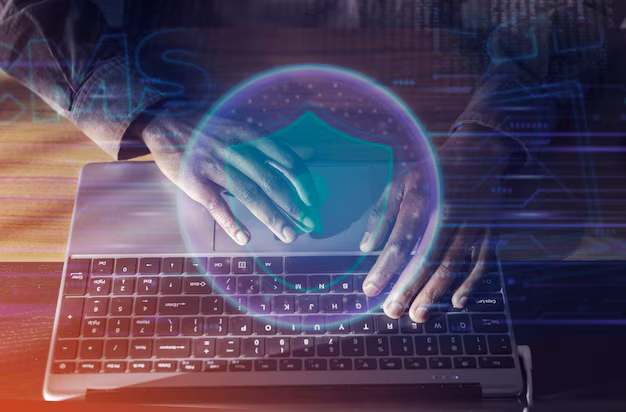In today’s digital world, online banking has become an integral part of personal and business finance management. The convenience of managing finances, transferring money, paying bills, and accessing financial services from anywhere has revolutionized the way people handle their banking needs. However, this shift to online banking also introduces significant risks, making cybersecurity an essential component of digital banking. Protecting sensitive data and ensuring secure transactions is crucial for both banks and their customers. Here’s why cybersecurity is indispensable for online banking.
1. Protection of Sensitive Personal and Financial Data
Online banking involves the transfer of sensitive information such as account numbers, passwords, credit card details, and personal identification numbers (PINs). This data is a prime target for cybercriminals who seek to steal it for fraudulent purposes, such as identity theft or unauthorized transactions.
Cybersecurity measures like encryption, multi-factor authentication (MFA), and secure socket layer (SSL) protocols are designed to protect this sensitive information from hackers. Without robust cybersecurity, there is a risk that this data could be intercepted or stolen during online banking activities, leading to severe financial losses and identity theft.
2. Prevention of Fraudulent Transactions
One of the primary concerns for online banking is the prevention of fraudulent transactions. Cybercriminals use various methods, including phishing, malware, and keyloggers, to gain access to a victim’s bank account and initiate unauthorized transfers. The consequences of fraudulent transactions can be devastating for customers, leading to financial losses and damage to their credit.
Advanced cybersecurity systems in online banking, such as real-time fraud detection, behavior analysis, and encryption technologies, help prevent fraud by identifying suspicious activity and blocking unauthorized transactions before they are completed. This not only protects customers but also maintains the bank’s integrity and trustworthiness.
3. Safeguarding Against Malware and Ransomware Attacks
Malware and ransomware attacks have become a significant threat to online banking. Cybercriminals use malware to gain control over a victim’s device, which can then be used to access online banking accounts. Ransomware attacks can lock users out of their accounts or threaten to expose sensitive information unless a ransom is paid.
Cybersecurity protocols like anti-virus software, firewalls, intrusion detection systems, and security updates are essential for defending against malware and ransomware attacks. By maintaining strong cybersecurity practices, banks can prevent malware from infiltrating their systems and safeguard customers’ financial assets from being held hostage.
4. Maintaining Trust and Reputation

For financial institutions, trust is one of the most important aspects of their relationship with customers. A single security breach, especially one that results in financial loss or identity theft, can severely damage a bank’s reputation. Customers expect that their banking institutions will protect their personal and financial information with the highest level of security.
Effective cybersecurity practices help build and maintain this trust. Banks that invest in strong security measures demonstrate a commitment to protecting customer data, which can foster customer loyalty and confidence. A reputation for excellent cybersecurity is essential for retaining customers and ensuring continued business success in a highly competitive market.
5. Regulatory Compliance and Legal Requirements
In many regions, financial institutions are required to comply with strict regulations regarding the protection of customer data and privacy. Laws such as the General Data Protection Regulation (GDPR) in the European Union, and the Payment Card Industry Data Security Standard (PCI DSS) globally, impose stringent requirements on how banks and financial institutions should handle and protect sensitive information.
Cybersecurity is not just a matter of risk mitigation but also legal compliance. Failure to meet these regulatory standards can result in hefty fines, legal action, and loss of business. By implementing proper cybersecurity measures, banks can ensure they comply with these regulations and avoid legal consequences.
6. Protection Against Distributed Denial of Service (DDoS) Attacks
Banks are frequent targets of Distributed Denial of Service (DDoS) attacks, where a large volume of traffic is sent to the bank’s website or online services to overwhelm its servers, rendering it inaccessible to customers. DDoS attacks can lead to significant service disruptions, inconvenience customers, and damage a bank’s reputation.
Cybersecurity solutions such as DDoS protection, server load balancing, and traffic filtering help prevent these attacks from affecting the bank’s online services. This ensures customers can access their accounts and complete transactions without interruptions, maintaining a seamless user experience.
7. Facilitating Secure Digital Payments
As online banking evolves, digital payment methods such as mobile banking apps, online shopping, and peer-to-peer (P2P) payment platforms have gained popularity. However, these digital payment systems are vulnerable to cyber threats, which makes securing them a top priority for both consumers and financial institutions.
Cybersecurity technologies, including tokenization (which replaces sensitive card information with a unique code), secure authentication processes, and fraud monitoring systems, are essential for ensuring the security of digital payments. By protecting payment systems, banks can ensure the safety of customers’ funds during online transactions, minimizing the risk of theft or fraud.
8. Protecting Against Insider Threats
Cybersecurity isn’t just about defending against external threats. Insider threats—where employees, contractors, or business partners with access to sensitive data use it maliciously or negligently—are also a significant risk for banks. These threats can include data breaches, unauthorized access to accounts, and fraudulent transactions.
Banks implement internal security measures such as access control, role-based permissions, and regular audits to monitor employee activity. These measures help detect and prevent unauthorized access to sensitive customer information, ensuring that the bank’s internal systems remain secure.
Conclusion
Cybersecurity is absolutely essential for online banking to protect customers from fraud, identity theft, and cyber-attacks while maintaining the integrity and trustworthiness of financial institutions. By investing in advanced security measures, banks can safeguard sensitive data, prevent fraudulent transactions, and comply with legal regulations. As the reliance on digital banking continues to grow, ensuring robust cybersecurity will remain a top priority to ensure the safety, security, and privacy of customers’ financial assets in the ever-evolving digital landscape.
FAQs
1. What are some common types of cyber-attacks targeting online banking?
Common attacks include phishing (tricking users into revealing login credentials), malware (software designed to infiltrate devices), and DDoS (Distributed Denial of Service) attacks (flooding servers to cause outages).
2. How can I protect myself from fraud when using online banking?
You can protect yourself by using strong, unique passwords, enabling multi-factor authentication, keeping your software and apps updated, and avoiding clicking on suspicious links or emails.
3. What role does encryption play in online banking security?
Encryption converts sensitive data into a secure code that can only be read by authorized users. This ensures that personal information, such as login credentials and transaction details, remains private and secure during transmission.
4. How do banks detect and prevent fraudulent transactions?
Banks use real-time fraud detection systems, artificial intelligence, machine learning, and transaction monitoring to identify patterns of suspicious activity and block fraudulent transactions before they occur.
5. Are mobile banking apps secure?
Yes, most mobile banking apps use strong encryption, biometric authentication (like fingerprint scanning or facial recognition), and other security features to protect your data. However, it’s important to download apps from trusted sources and be cautious about sharing personal information.


